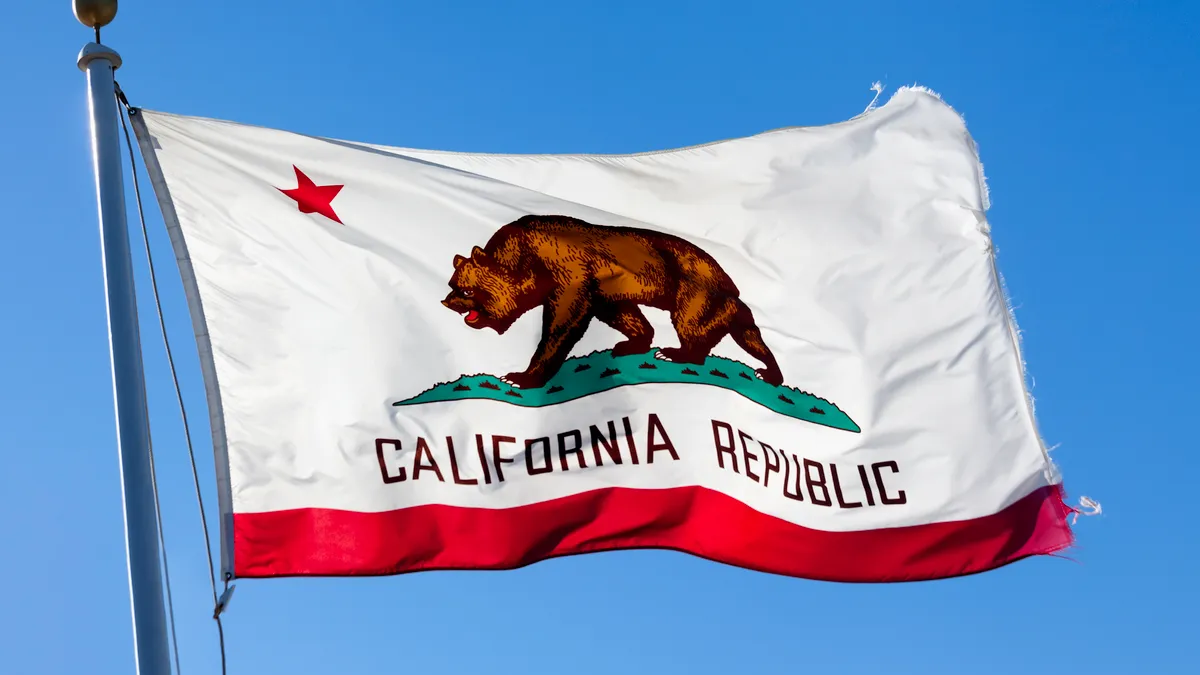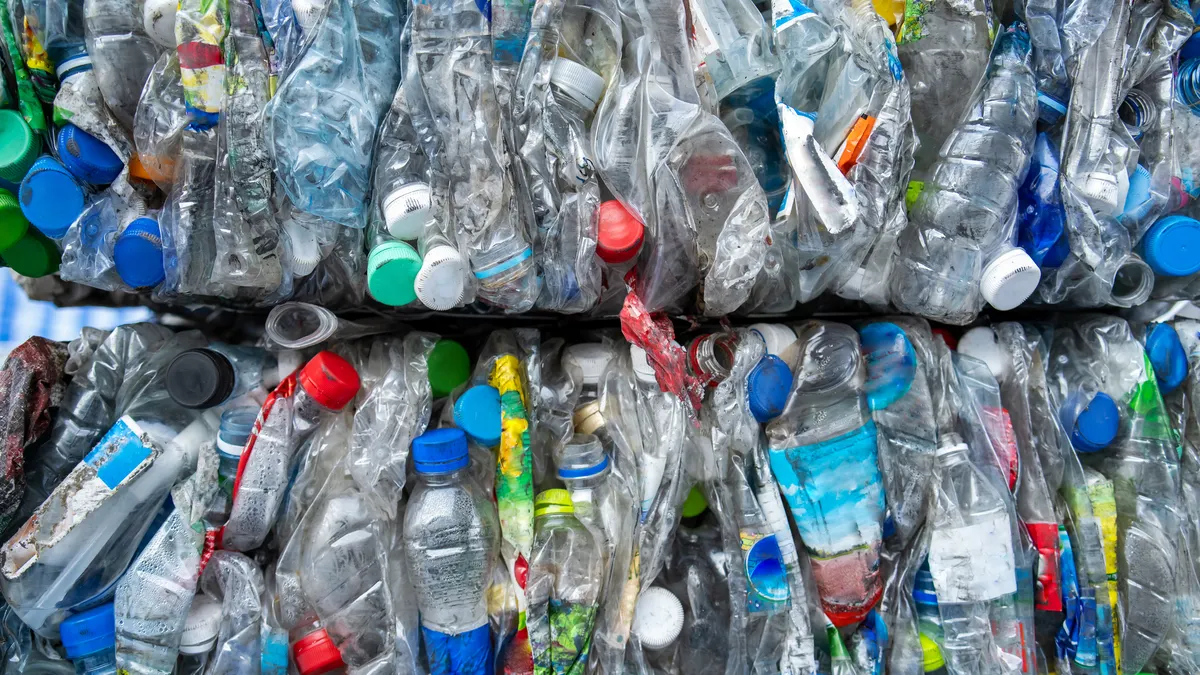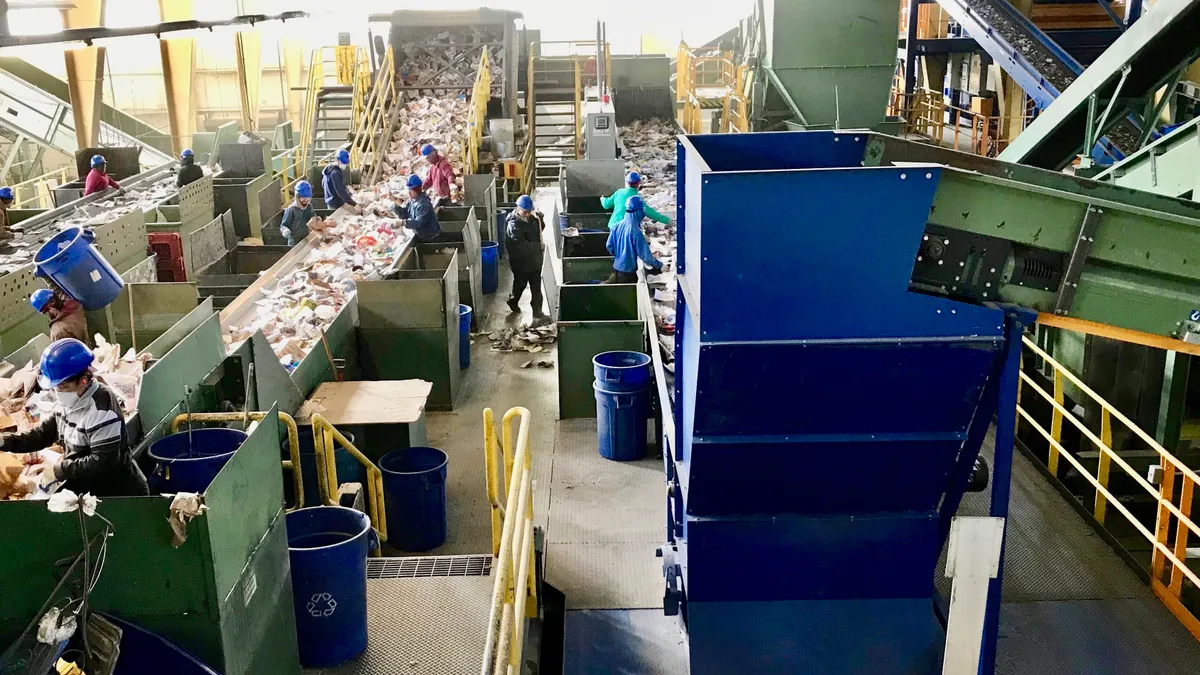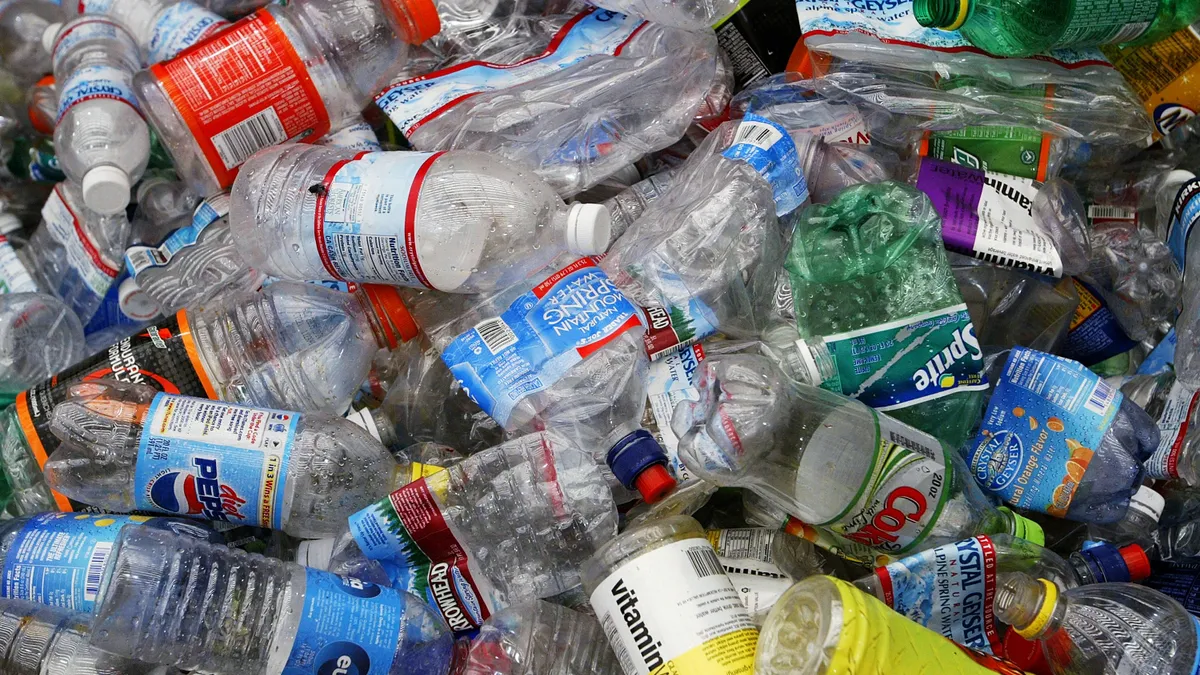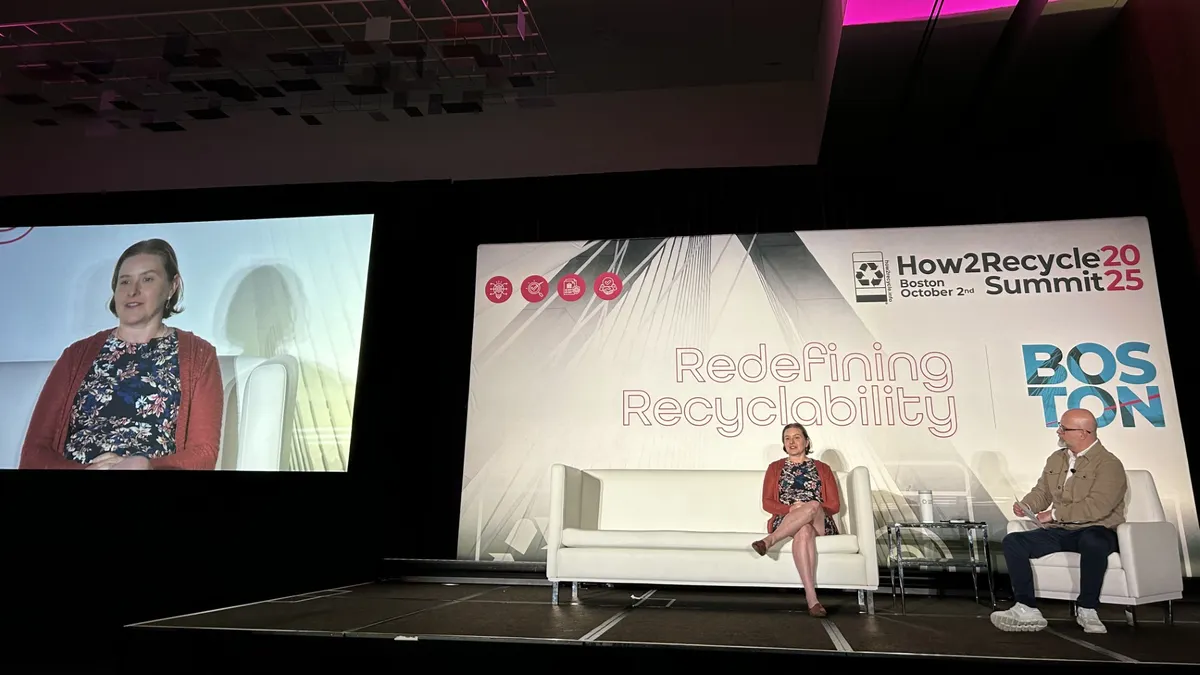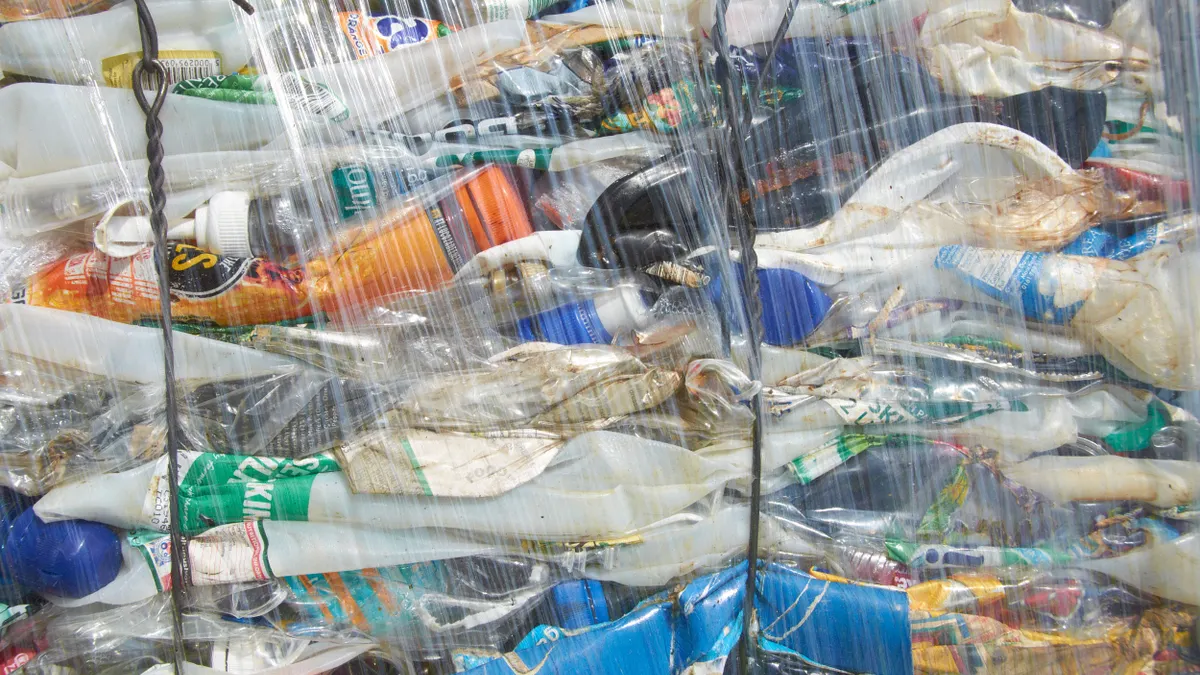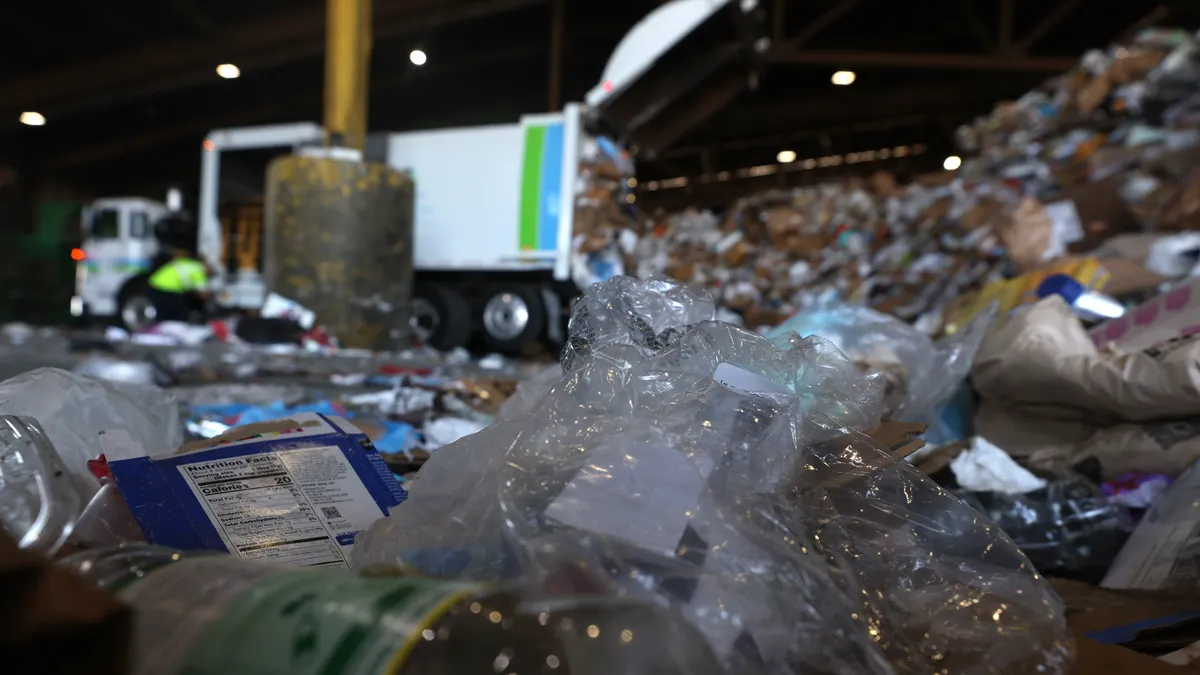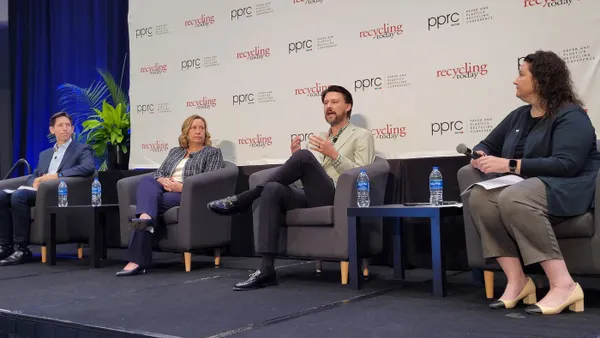California’s Department of Resources Recycling and Recovery is working on revamped SB 54 regulations. The agency released revised draft regulations last Friday and is accepting feedback on proposed changes through June 3. Amid this informal stage of rulemaking, CalRecycle will host a public workshop this coming Tuesday, May 27.
This follows Gov. Gavin Newsom restarting the regulations process for the packaging extended producer responsibility law in March, when rules were not finalized by a key deadline. Even with anticipated revisions, state leaders said the change would not shift the timeline for implementing the law.
Notable changes are also happening at Circular Action Alliance, the producer responsibility organization selected to help implement packaging EPR in California. CAA announced Thursday that former CalRecycle director Rachel Wagoner, who CAA hired in December 2024 as its executive director for California and who led CalRecycle when SB 54 passed, will next month “move into an external advisory capacity” for CAA.
“CAA will conduct a comprehensive search to identify an operational executive director to work with CAA’s national team on the development of the program plan and the expansion of the in-state team,” the PRO announced.
Wagoner joining the producer group had prompted some concerns. The Los Angeles Times reported that on Feb. 19, an anonymous whistleblower submitted a complaint to California’s Fair Political Practices Commission, seeking an investigation into Wagoner “on the grounds that she violated a ‘switching sides’ ban that prevents former regulators from receiving compensation to work against the state on matters they once oversaw.”
CAA shared details Thursday on its California implementation work.
“CAA’s work on California’s SB 54 is entering an accelerated phase,” said CEO Jeff Fielkow, in a statement. “With the informal rulemaking period underway and final regulations on the horizon, we’re intensifying our focus on building a robust program plan, reimbursement mechanism to enhance the recycling system, and reporting systems to meet California’s ambitious recycling and waste reduction goals.”
In its news release Thursday, CAA laid out a producer data reporting timeline for California. It anticipates the registration portal for California will open to producers Aug. 1, with a registration deadline of Sept. 5. Producers can report data using the portal come Sept. 15, with a reporting deadline of Nov. 15.
CAA said it’s taking lessons from EPR implementation in Oregon, which this year was the first U.S. state with a producer reporting deadline. This will enhance the portal experience. “This proactive step will ensure a smooth and efficient reporting process for participating producers, which will report 2023 supply data in 2025,” CAA said.
CAA is working on the program plan that it will submit next year. In the Thursday news release, the PRO highlighted work around source reduction and reimbursement strategy.
Source reduction efforts will include developing an incentive system. Regarding reimbursement, CAA said it’s working on a database “that will provide a complete picture of California’s recycling systems today and into the future.”
“Using recycling system costs from 2022 as a baseline, CAA is identifying and quantifying the incremental (‘net new’) costs directly attributable to meeting SB 54 requirements,” CAA said. “This forward-thinking approach will accommodate reimbursements for eligible expenses incurred since Jan. 1, 2023, while also anticipating future funding needs from 2027 onwards, relying consistently on clear documentation, service agreements and pre-approval processes as appropriate.”
Early reactions to draft regulations
Industry stakeholders said the SB 54 draft regulations reflect some improvements and some concerning changes.
Rob Keith, membership and policy director at Ameripen, said the packaging policy trade group sees “some changes that are generally positive, that are going to help address some of the cost concerns.”
“We're looking closely at sections that address producer definition, or the producer hierarchy, as well as reuse and refill — just making sure that those provisions are going to be workable for producers moving forward,” Keith said.
Larine Urbina, senior vice president of communications at Circular Action Alliance, said in an email this week that “CalRecycle’s revised draft regulations for SB 54 provide clarity on several key areas, including producer obligations, reporting timelines and the requirement for producers to join Circular Action Alliance.” She called these elements “essential for effective program plan development and implementation.”
Urbina noted that while CAA is “already advancing implementation in several areas, this added clarity allows us to further accelerate our work to advance the plan for meeting California's ambitious recycling and packaging waste reduction goals.”
California State Sen. Ben Allen, an author of SB 54, also acknowledged improvements “that help producers more efficiently begin implementing the program.” But in the same statement, he flagged “concerns with several provisions that appear to conflict with law.”
“Notably, it appears the proposed draft regulations exempt certain products that are clearly in the program’s scope. We also worry the draft regulations are now written to allow producers to use polluting technologies in violation of the law,” Allen said. “Getting these provisions right continues to be a top priority for us as we continue to engage in this process.”
Heidi Sanborn, executive director of the National Stewardship Action Council, also noted concerns with apparent additions to a list of exempted products.
Additions include notes that “empty packaging materials not yet used by a good are not ‘single-use packaging’ or otherwise ‘covered material’ under the Act, such that a person is not a producer merely because they manufacture, sell, offer for sale, or distribute such materials.” In another example, a new line in the exemption list notes, “Packaging necessary to comply with rules, guidance, or other standards issued by the United States Department of Agriculture or the United States Food and Drug Administration.”


